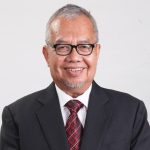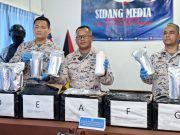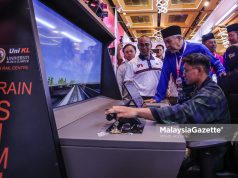By: Professor Dato Dr Ahmad Ibrahim
The national biomass action plan has been launched. Since the palm oil biomass is the largest, the Ministry of Plantation and Commodity has been tasked to coordinate the plan execution. A key policy recommendation is to establish biomass collection centers in strategic locations to optimize logistics and create economy of scale. The supply from a lone mill cannot justify the return on investment.
While we are contemplating to establish the biomass collection and processing hubs, our neighbors are moving ahead with concrete plans to commercially exploit the vast potential of oil palm biomass. Only Malaysia and Indonesia are blessed with the huge amounts of oil palm biomass. The irony of it all is that neighboring countries which do not have even a single oil palm tree are taking serious measures to embrace the potentially lucrative biomass business. There is no doubt that there is gold in oil palm biomass. Admittedly there are risks involved. It is a comparatively new industry.
Market uncertainty is one major risk. Technology is also a risk. So is raw material supply. Investment is also not cheap. High risks can also deliver high returns. Private investors may not jump in without clear returns on investment. This is where the government must chip in. All the analysis suggest that oil palm biomass is destined to transform the country’s palm oil economy. At around 6 million hectares, we have no more room to
maneuver to expand the business. Ideas to improve yield has been around for years. But oil productivity has been stagnating at less than 4 tons per hectare.
The industry has been quite successful in adding value to the oil part of the biomass. We are now a big player in palm oil based packed products including shortening, margarine and frying oil. Most of the leading palm oil companies have also ventured into the non-food business, principally oleochemicals. That takes care of the oil biomass, which is only 20 percent of the total. The other 80% of the crop biomass remains underexploited. These include the EFBs, the fronds and the trunks. Not to mention the carbon-rich palm oil mill effluent which has the potential to generate methane-rich biogas.
The idea to build new businesses from the EFBs is not new. It has been toyed around for more than a decade. But the progress has been lethargic. Since it has yet to develop into big business, the palm oil industry has not shown much urgency. This is quite understandable since the industry is already making good money focusing on the palm oil, which has been their core business. If the government is keen to catalyze the relatively new EFB driven biomass industry, expecting the palm oil industry in the current structure to move the agenda is a futile exercise.
The government must establish a new entity to drive the biomass action plan. As was done when the palm oil industry started, the new entity must be made of a tripartite partnership between government, industry and the academia. Technology is a crucial part of the industry-building equation. This is because many fundamental studies on the biomass have shown much potential in the production of many high value products.
These include a few advanced materials such as super strong nano cellulose and graphite which is a key component of batteries. A recent workshop held to chart the sustainable economy roadmap for Felda also alluded to such potential. As a major plantation GLC, many believe Felda has the right reasons to drive the biomass action plan. This is because any added value that can be realized from the EFBs that Felda produces through its commercial arm FGV will eventually trickle down to the smallholder settlers of Felda. That would translate into a positive impact on the income of the smallholders. It has been suggested that the best way to catalyze the execution of the biomass action plan is for Felda to work closely with the ministry of plantation and commodity. That would be a sure way to mine the gold in the oil palm biomass.

The writer from Associate Fellow Ungku Aziz Centre for Development Studies Universiti Malaya

















